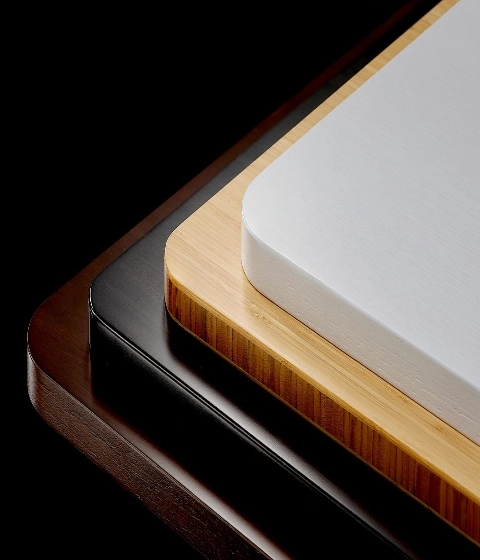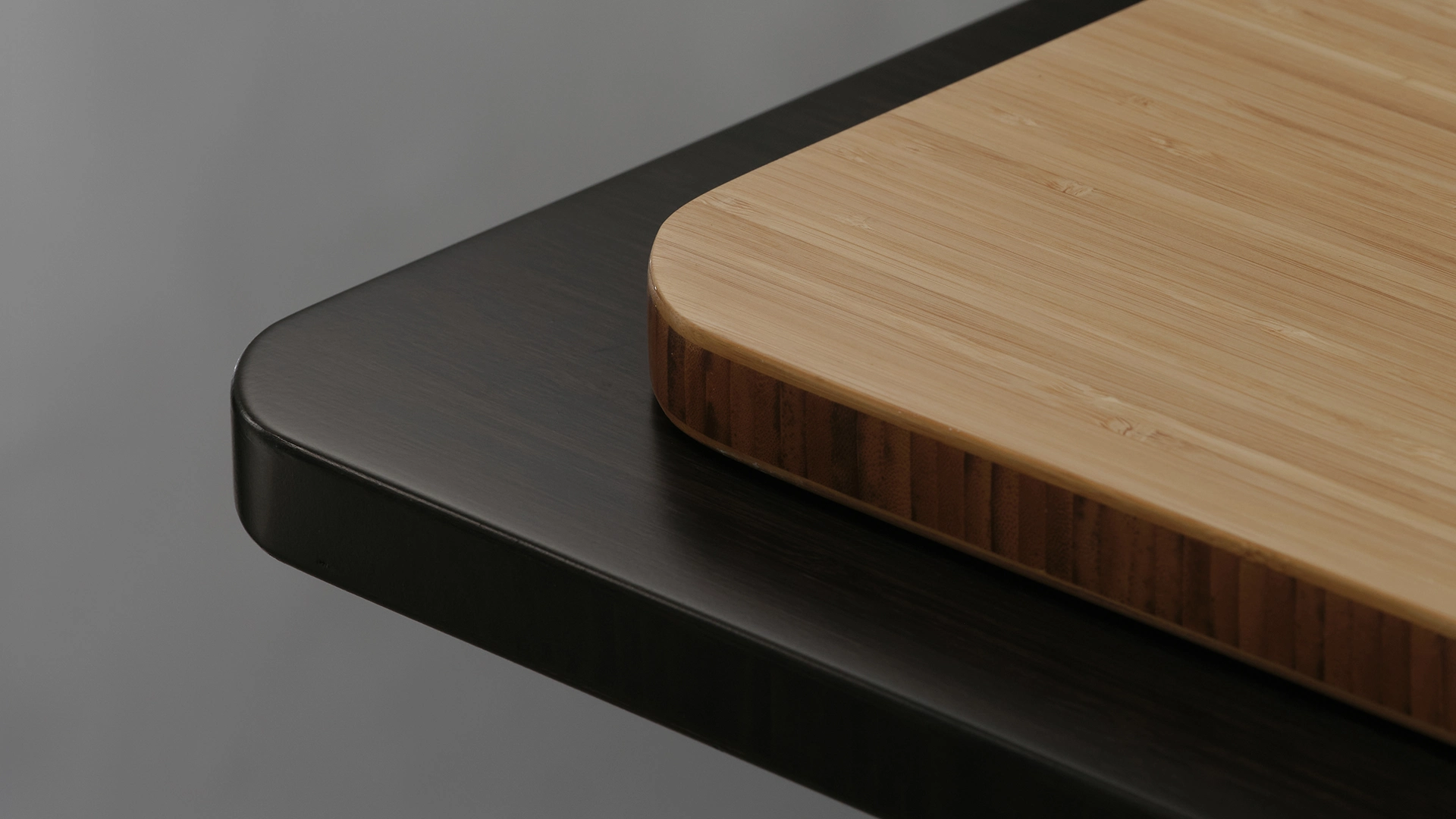Solid Wood or MDF Tables? A Comprehensive Guide for Procurement Managers

Selecting between solid wood and MDF tables can be a crucial choice for procurement managers. This handbook streamlines the task by evaluating their contrasts, effectiveness, and vital selection aspects. Whether you value sturdiness, expense, or eco-friendliness, we’ll assist you in making a wise decision—while emphasizing why FOREST shines as a dependable provider of solid wood tables.
What Are the Key Differences Between Solid Wood and MDF Tables?
Grasping the fundamental variations between solid wood and MDF (Medium-Density Fiberboard) tables is the initial move toward a savvy procurement choice.
Material Composition and Characteristics
- Solid Wood: Fashioned wholly from genuine lumber like oak, walnut, or maple. It features a distinctive grain design and natural robustness.
- MDF: Constructed from pressed wood particles and resin. It’s even, sleek, and frequently layered with veneer or laminate for a refined appearance.
Durability and Longevity Comparison
- Solid Wood: Remarkably sturdy, it endures wear for years with adequate upkeep. You can refinish it to reclaim its initial allure.
- MDF: Less tough, it’s likely to chip or bulge if harmed. Its duration is briefer, usually 5-15 years, based on usage.
Aesthetic Appeal and Design Versatility
- Solid Wood: Delivers enduring grace with organic patterns. It’s perfect for traditional or custom styles, as showcased in FOREST’s solid tables.
- MDF: Yields a crisp, contemporary look with broader scope for complex forms. Yet, it misses the true coziness of wood.
How Do Solid Wood and MDF Tables Perform in Different Environments?
Surrounding conditions heavily influence which substance fits your requirements.
Resistance to Moisture and Humidity
- Solid Wood: Innately resilient, yet it may twist or split in severe dampness if unsealed. Good sealing boosts its capability.
- MDF: Very prone to wetness. It expands or breaks apart when wet, rendering it less suitable for moist regions.
|
Material |
Moisture Resistance |
Notes |
|
Solid Wood |
Fair to Strong |
Needs sealant in damp spots |
|
MDF |
Weak |
Steer clear of baths or kitchens |
Performance in High-Traffic Areas
- Solid Wood: Thrives in bustling places like workplaces or eateries. It resists scuffs and intense use with little damage.
- MDF: Deteriorates quicker in busy areas. Surface flaws are tougher to fix, often needing a swap.
Maintenance Requirements Over Time
- Solid Wood: Demands regular buffing or refinishing to keep its glow. Spills clean off easily if coated.
- MDF: Needs scant care at first. However, it’s unfixable once marred. It requires cautious use to dodge dents or water stains.
What Are the Factors That Affect the Choice?
Procurement managers must balance several elements to match their pick with company aims.
Cost Implications
Initial Purchase Costs
- Solid Wood: Carries a steeper starting price due to fine materials and skill. Costs shift depending on lumber kind and style.
- MDF: Wallet-friendly, often 30-50% less costly than solid wood. This makes it appealing for brief ventures.
Long-Term Value and Return on Investment
- Solid Wood: Provides stellar ROI. Its endurance and fixability cut down on replacement rates, trimming expenses over time.
- MDF: Starts cheaper but racks up greater costs later. Frequent swaps in tough settings drive up the tally.
|
Cost Factor |
Solid Wood |
MDF |
|
Initial Cost |
Steep |
Modest |
|
Long-Term Value |
Superb |
Fair to Poor |
Sustainability Factors
Environmental Impact of Production Processes
- Solid Wood: Harvesting from well-run forests curbs ecological damage. Still, unchecked cutting can harm woodlands.
- MDF: Uses lumber scraps, cutting waste. But its resin glues might emit formaldehyde, raising health and disposal issues.
Recyclability and Eco-Friendly Options
- Solid Wood: Completely reusable and compostable. Firms like FOREST focus on green methods, boosting its eco-charm.
- MDF: Reusability is curbed by glues. Green variants exist, though they’re rarer and pricier.
Why Should Procurement Managers Consider FOREST for Solid Wood Tables?
FOREST emerges as a trusty ally for procurement managers hunting for top-notch solid wood tables. Here’s why:
Overview of FOREST’s Expertise in Solid Wood Furniture Manufacturing
Per FOREST’s website, the firm excels in creating upscale wood pieces for B2B buyers. Focusing on solid wood, FOREST merges classic craftsmanship with current methods. This delivers tables that suit varied business demands.
Commitment to Quality and Sustainable Practices
FOREST picks prime hardwoods like oak and walnut, guaranteeing vigor and appeal. Their earth-friendly sourcing and production sync with sustainability targets. This makes them a top pick for eco-minded purchasing.
Customization Options for Diverse Business Needs
Want unique designs? FOREST provides custom answers. They offer everything from chic table and desk collections to sturdy solid wood tables for offices, hotels, or shops. Their adaptability meets specific needs and large orders.

Conclusion
Deciding between solid wood and MDF tables rests on your goals as a procurement manager. Solid wood brings unrivaled toughness, visual worth, and green benefits, though it costs more at first. MDF gives affordability and flexibility but lags in staying power and strength. For firms chasing lasting excellence, FOREST’s solid wood tables offer a seamless mix of function and eco-care. Choose wisely for your next buy—check out FOREST’s range today.
FAQs About Solid Wood vs. MDF Tables
Which Table Material Is More Durable for Commercial Use?
Solid wood outshines MDF in business settings. It handles heavy wear, resists scratches, and can be refinished. This makes it great for busy spots like eateries or shared workspaces.
Are Solid Wood Tables More Expensive Than MDF Tables in the Long Run?
Not always. Solid wood starts pricier, yet its sturdiness and repair options reduce swaps. Over time, this can beat MDF’s shorter life and higher replacement needs.
How Can I Maintain Solid Wood Tables to Ensure Their Longevity?
Dust weekly with a gentle cloth. Polish every 6-12 months with wood-safe items. Use coasters to block water rings. Refinish every few years to renew its gleam and shield it from wear.

